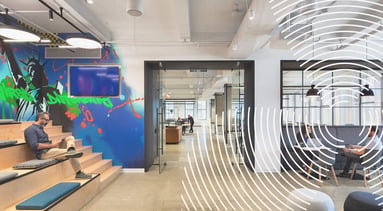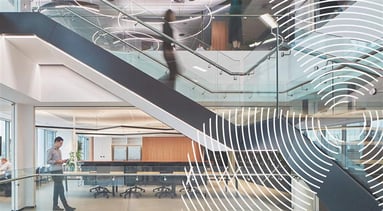
Saving on your real-estate costs can make a solid contribution to your company’s post-lockdown recovery.
The economic shock of coronavirus will affect most businesses, directly or indirectly, and most are looking for cost savings. Less office space will be needed in future, since working remotely has proven popular among employees and is productive for businesses, too.
This means that the property portfolio is under scrutiny: excess office capacity is expensive, with rent, property taxes, utilities, insurance, maintenance, security, cleaning and more still to pay for.
Our future workplace strategy, Propeller, addresses these issues and more, including the shift to experience-based working (EBW). Here, we take a brief look at how real estate executives can contribute to the wider drive to cut costs. We ask whether you want to reduce your space, how to do it, and what you could do with the money you save. We also offer a word of warning about the effect of un-reduced space on employees.
Why is less office space needed?
Our client research tells us that 90% percent of the workforce wants to continue working from home at least one day a week. 10-30% of office desks will remain unoccupied, in addition to the average 30-40% that was already typically unoccupied before COVID-19. A workpoint could remain unused 60-80% of the time, so this has real implications for your real estate footprint.
Do you even want to reduce your space?
One option is obviously to shed part of your office space, if you’re able. On the other hand, some companies are holding onto theirs – whether hedging their bets, or simply making a pragmatic decision. For example, they may choose to adapt their free space to create a significantly enhanced environment for employees and visitors.
How can you reduce your office space?
Your options depend on whether you rent or own, and how permanent you want the changes to be. Some options could not only make savings but could even generate revenue. You might:
- Temporarily close off one or more floors or zones
- Return some office space to your landlord
- Sub-let some office space
- On a shared-cost basis, invite in a partner, an academic collaboration or even a client
- Open up some paid space for co-working, incubation or spin-out (all under your own control)
- Outsource certain functions so you no longer need the office space (because you’ll no longer need the employees).
Reducing office space isn’t just about costs
Wide-open spaces and empty desks are morale-killers. It can look as if business is suffering, even if the full complement of staff are busily working off-site. This can make people anxious about their own job security.
Echoing spaces kill collaboration, too. The famous study by Thomas Allen found that colleague proximity is key – when people are out of sight, they’re out of mind: “We are four times as likely to communicate regularly with someone sitting six feet away from us as with someone 60 feet away, and we almost never communicate with colleagues on separate floors or in separate buildings.”
So if you can’t reduce your office space in the short term, create more condensed workspaces (still with safe distancing in mind) that maintain the buzz of a productive and enjoyable office.
What will you do with the money you save?
If the money doesn’t need to go straight back to the bottom line, and you can hold onto some or all of what you save, you could invest in:
- smart technology for your offices
- remote hubs as an alternative to home working
- furniture/equipment for employees to use at home
- amenities and facilities to create a post-lockdown destination workplace
- your brand and culture – the explosive growth in homeworking has led to a ‘culture shock’
- a fund which could protect against the cost of any future waves of pandemic.
“Untold amounts of money are invested in tools to increase individual productivity, but the money might be better used to design a workplace that promotes collisions that will make the organization – not individuals – more successful.”
– Places That Move People, Harvard Business Review
Why not get in touch and start a conversation about Propeller? And check back next week for our article on destination workspaces in response to coronavirus.


